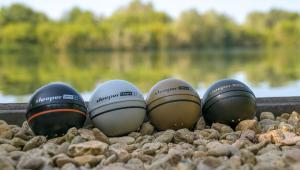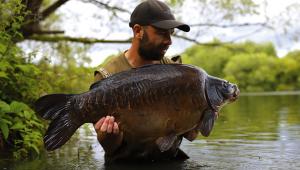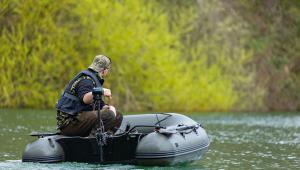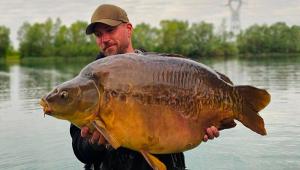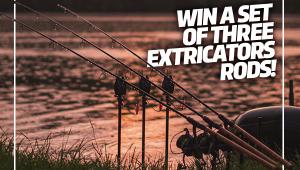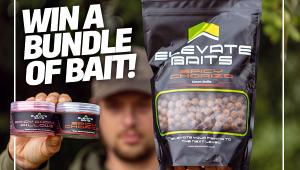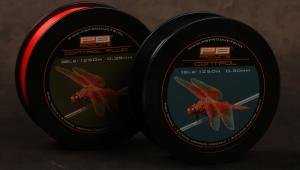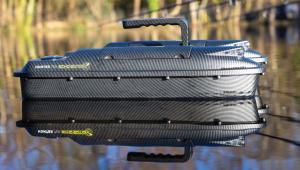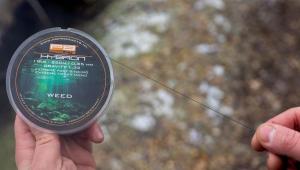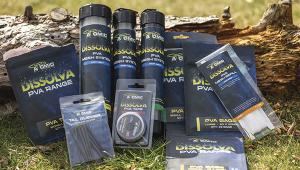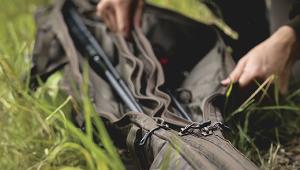7 Top Tips | Bottom-Bait Fishing
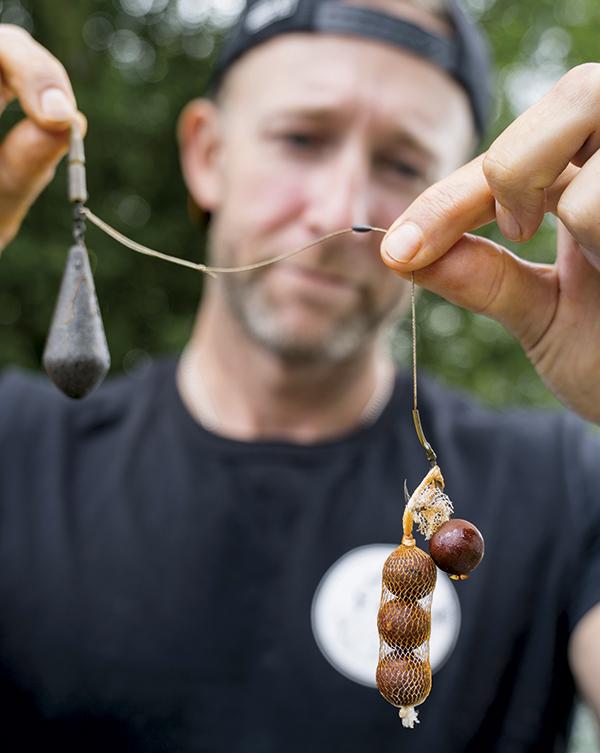
When was the last time you heard about an angler casting out a simple bottom bait, and when was the last time you heard of an angler attaching a three-bait stringer to that rig?
It seems that the trends of the modern era have been heavily based upon the use of pop-ups, and in the right situation, where they will provide a valuable advantage over a bottom bait, that would be my choice. However, I would always prefer to use a bottom bait presentation where the circumstances dictate; it offers so many advantages over a pop-up in my opinion, certainly on those cleaner areas of gravel, silt or clay.
1. The Natural Element Wherever possible, perfectly mimicking your free offerings will no doubt increase the carp’s confidence when approaching the hook bait itself.
A hook bait positioned flush to the deck, matching the surrounding baits, will cause very little caution to the carp when they are feeding. Especially during the later stages of the year when the fish have been heavily pressured on pop-ups or bright hook baits, toning it down and completely matching the loose-fed baits you are using will provoke a positive feeding response.
2. The Stringer Most of my fishing in recent weeks has been done with minimal amounts of bait, often just a simple PVA stringer of three Pacific Tuna baits. By observing the water closely, looking for subtle signs of feeding and fizzing, you can quickly begin to pinpoint areas where the fish are moving and place minimal traps that can bring quick bites.
A three-bait stringer provides enough attraction around the hook bait to promote interest, while also maintaining the subtle factor that the carp cannot associate with angling pressure such as larger volumes of bait and large scatterings of boilies.
To increase the pulling power of my stringers even more, I like to give them a good dip in the Hot Chorizo Extract, to really crank up the food signals!
3. The Rig Fundamentals The rig I use for my balanced bottom bait set-up is very simple and is based on a rig I have been using for a number of years. The key in my opinion to this rig is at the hook end, where I have used a piece of shrink tube to extend the shank of the size 4 Edges Beaked Point hook, which I favour.
The hair is trapped in place with a small piece of silicone and when used in conjunction with a wafter hook bait, it creates superb hooking mechanics from the ‘extended’ shank present.
4. Baiting Up I generally begin a session by just using the stringers, trying to keep disturbance to a minimum and watching for subtle signs of feeding. The stringers allow me to quickly and effectively reposition a rod with the optimum level of attraction to nick a bite.
Once I have noticed any obvious signs of feeding, I will note where it has come from and then get a rod in place with minimal disturbance. If I feel there are a number of fish present and up for a feed, I will lightly bait up the area with a scattering of boosted boilies and a throwing stick. I still want to maintain that baiting approach that doesn’t cause any alarm to the fish when approaching an area, which is why I lightly scatter the baits around, possibly mimicking some leftover bait that the fish will approach with little caution.
A stringer presented among 20 to 30 boosted Tuna free offerings will stimulate interest from a group of passing fish.
5. Bait Boosting I have always been an advocate of boosting my free offerings straight from the bag, especially when using the minimal baiting approach that I apply during this time of year. Despite using less bait, those turbocharged Tuna baits that I lightly scatter around the baited stringer will go so much further in terms of pulling power.
To boost up my Pacific Tuna baits I add a liberal dose of both the Liquid Tuna Extract and Hot Chorizo extract, to create a wonderful, spicy and highly attractive loose feed bait that emits attraction up into the water column.
It is best to add the liquids at least 24 hours before you go fishing, to allow the bait to fully absorb the liquids, slowly releasing them into the swim once introduced.
6. Casting Regularity The three-bait stringers lend themselves perfectly to the mobile approach, as they are simple to tie and repositioning a rod can be done within a matter of minutes. The key is to closely observe the water and use three rods to maximum effect, positioning them in notable areas where fish have fed or seem to be patrolling regularly.
One key tip when using the stringers with my dedicated bottom bait rig is to leave the PVA tag end long, which can then be used to wrap around the hair and hook shank to keep the hair in place on the cast.
7. Hook Bait Choice The reason why this technique is so effective at the back end of the year when the fish have received so much pressure is down to the hook bait! A match-the-hatch type hook bait is much less obtrusive and the colour subtlety and matching flavour levels give no reason for the carp to view it with any suspicion.
My preferred hook bait of choice is a dedicated balanced wafter, which will negate the weight of the hook to create an almost identical free offering. I boost up my Pacific Tuna Wafters in the same way I do my free offerings, with a light glaze of Hot Chorizo and Tuna Extract.
If your results have recently dwindled or you are looking for a different way to approach your water this autumn, the simple but highly effective bottom bait combined with the stringer may well beat the deadlock and boost your results once again. The key to this approach is closely observing the water and positioning these small parcels of attraction in areas where the majority of activity occurs.
If you want to learn more from the best carp anglers in the business, subscribe to our magazine.
- Log in or register to post comments
